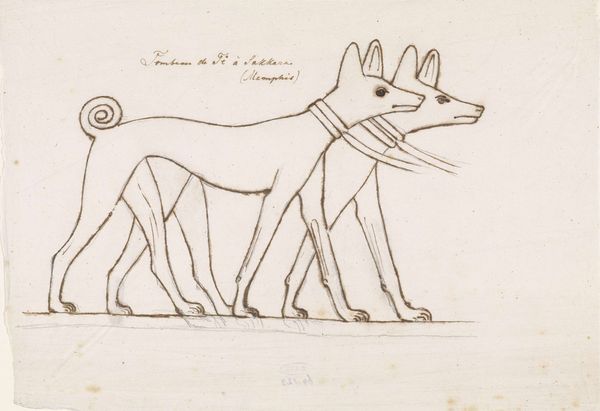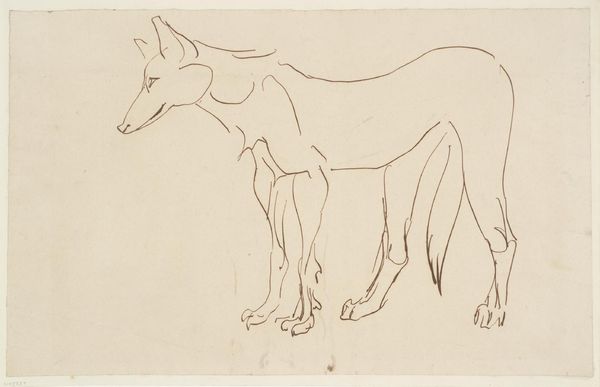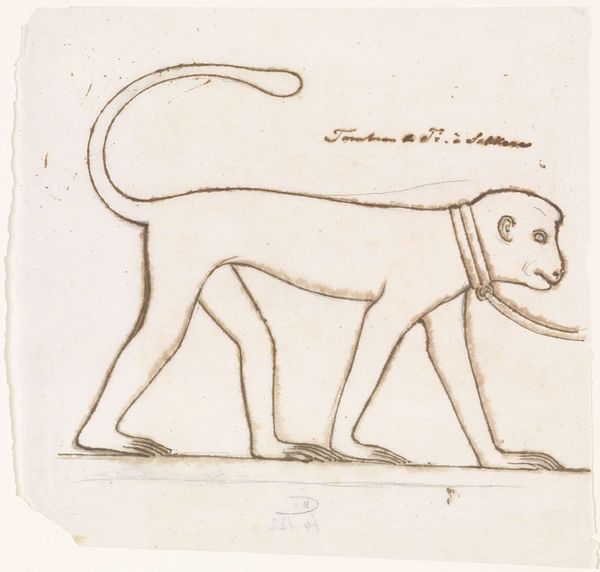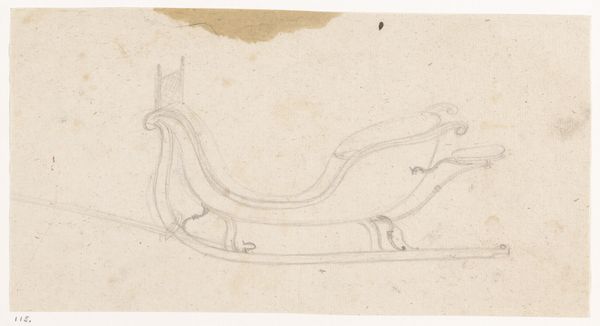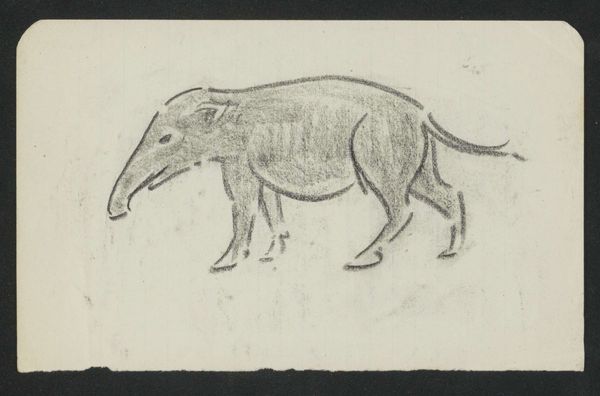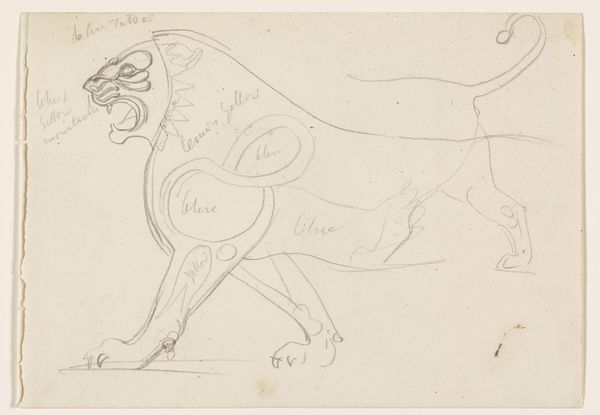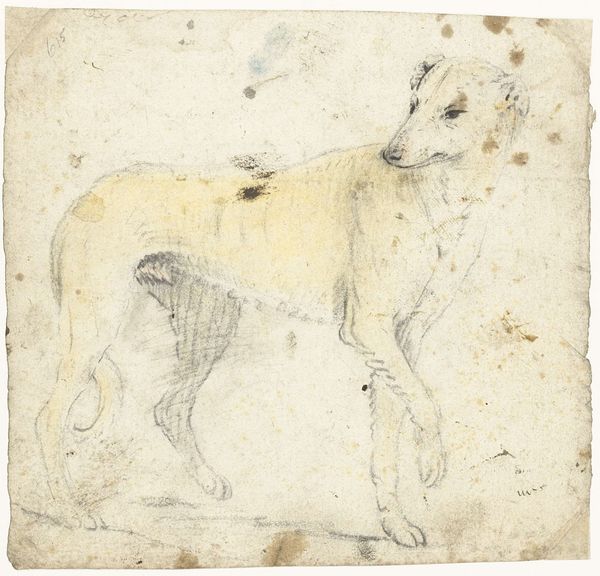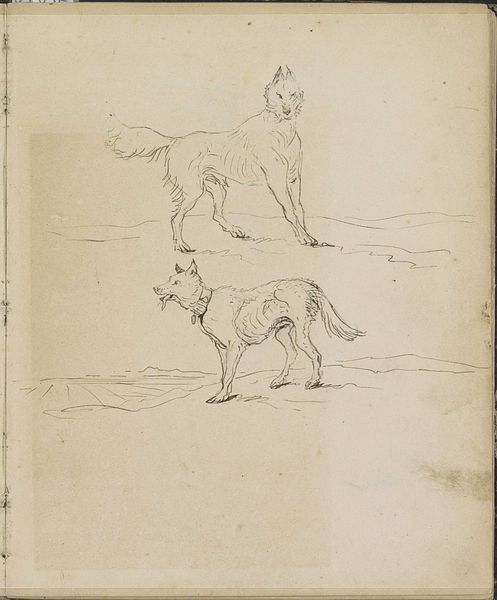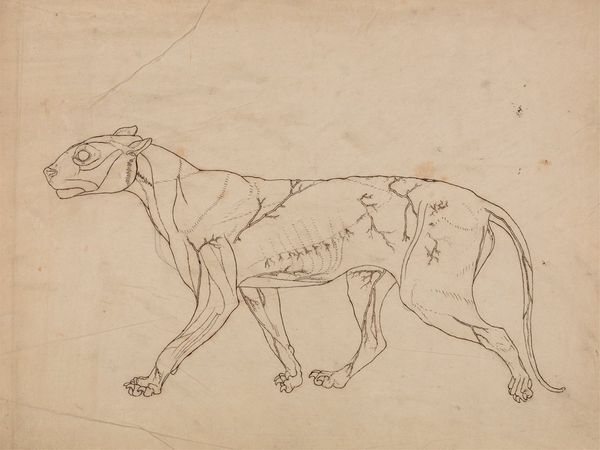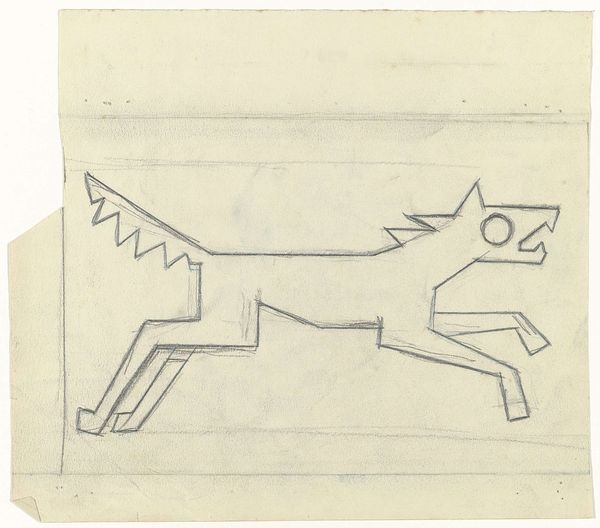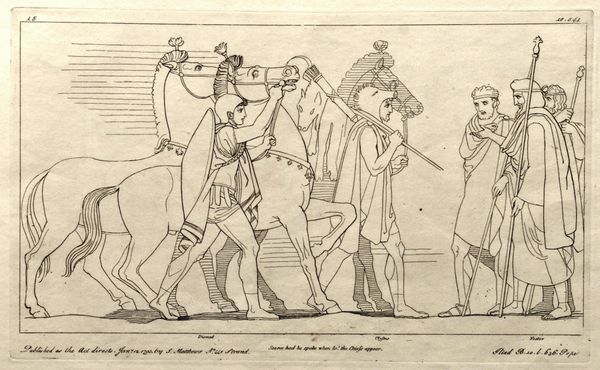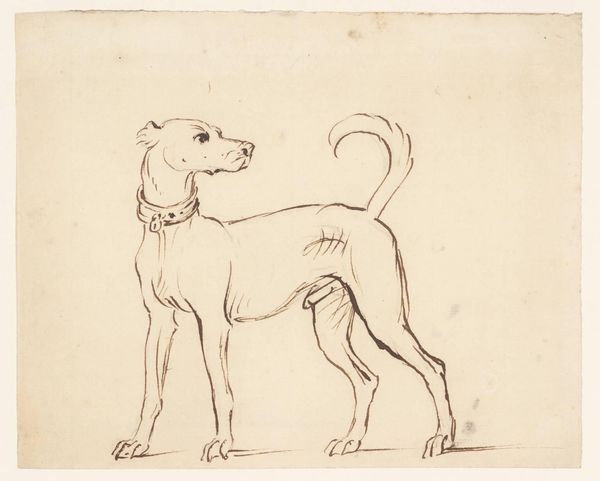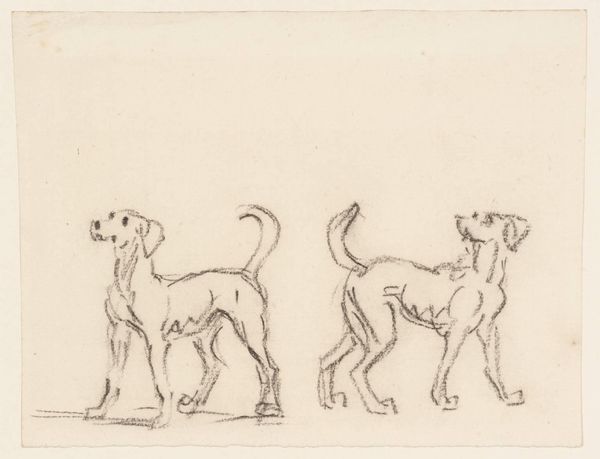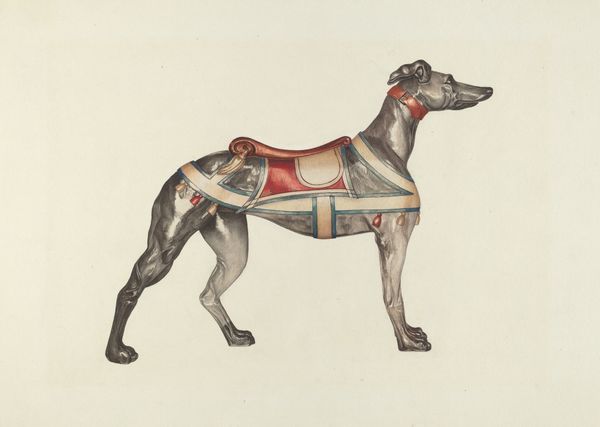
drawing, ink, pen
#
drawing
#
pen sketch
#
ancient-egyptian-art
#
figuration
#
ink
#
ancient-mediterranean
#
pen
Dimensions: height 335 mm, width 512 mm
Copyright: Rijks Museum: Open Domain
Curator: This pen and ink drawing by Willem de Famars Testas is entitled “Egyptische reliëfsculptuur: hond en aap,” dating roughly from 1844 to 1896. Editor: Well, my immediate reaction is to the elegant linearity. It's spare, yet evokes such a strong sense of form and posture in these animals. Curator: I'm interested in the choice to replicate an Egyptian relief. We know de Famars Testas traveled extensively. His process of sketching on location reveals how European artists engaged with and appropriated ancient Egyptian motifs and aesthetics. Editor: The rendering of the animals, particularly the stylized dog with its slender frame and elongated snout, seems heavily influenced by Ancient Egyptian artistic conventions. Consider the lines themselves: deliberate, economical, almost hieroglyphic in their clarity. Curator: Absolutely. The lines denote form, but they also speak to the broader phenomenon of Orientalism—a cultural encounter laden with power dynamics that manifested materially through reproductions like this one for Western consumption. Editor: And we see the composition prioritizing essential characteristics, reducing forms to their recognizable essence. It transcends mere representation, achieving an almost symbolic dimension, wouldn’t you agree? Curator: Certainly, especially given the cultural context. I wonder about the artist's intended audience—did they appreciate the craftsmanship or exoticize the subject matter, and how much did their perceptions drive demand for similar pieces? Editor: It offers us a fascinating study in how different artistic languages can converse across vast stretches of time and place, reducing it down to just line, form and balance on a 2-dimensional surface. Curator: Yes, thinking about it, the artwork invites us to reconsider not just art history, but the story of how different worlds observe and translate each other, all seen in the materials used and the resulting commodity. Editor: A testament to how something as simple as a line can bridge continents and millennia.
Comments
No comments
Be the first to comment and join the conversation on the ultimate creative platform.
